Brighterdays ahead

Halifax’s rapid transformation continued in 2022 — meet the unheralded heroes reshaping our city
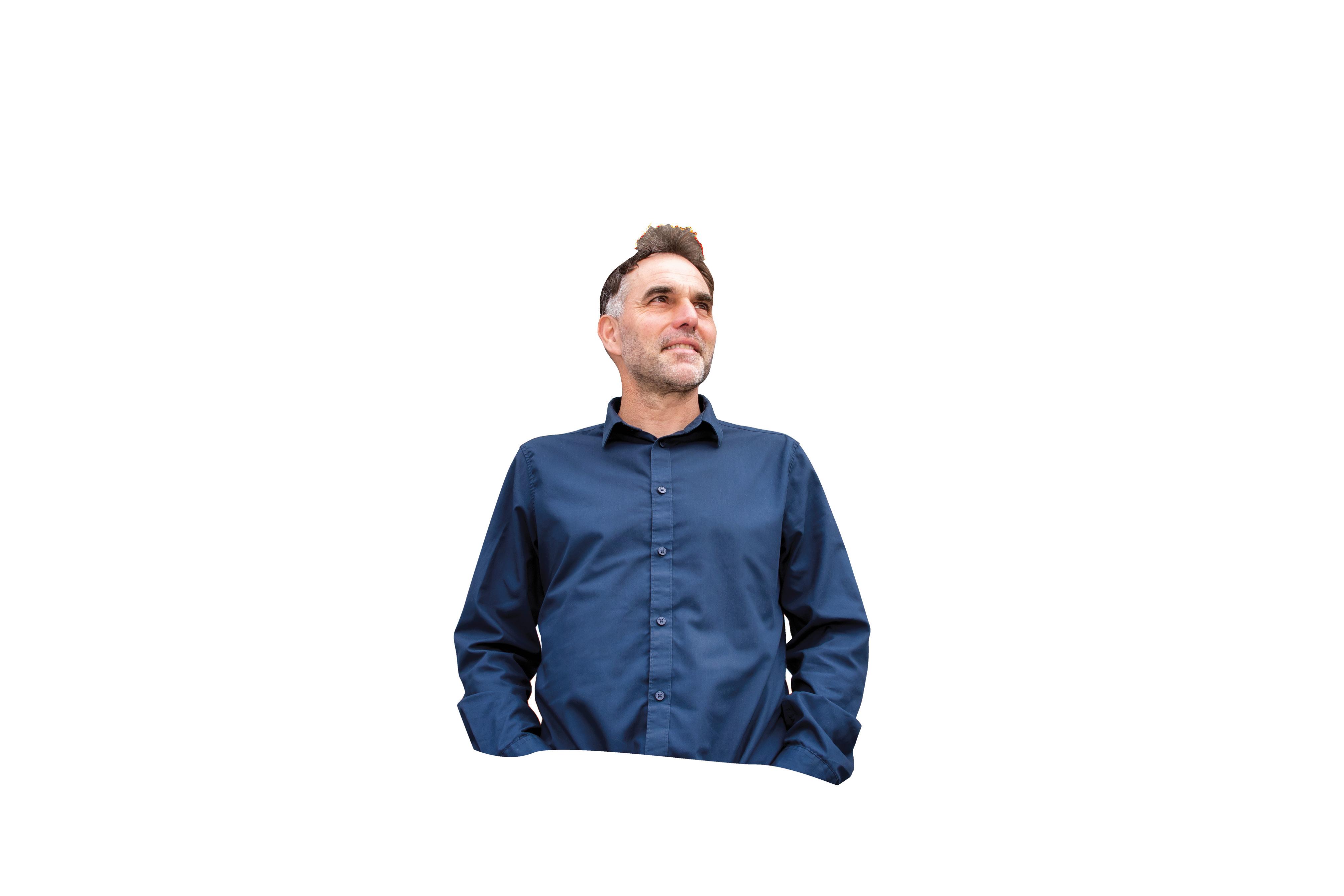



Halifax’s rapid transformation continued in 2022 — meet the unheralded heroes reshaping our city


Market: Shop local in the open-air market on the Halifax waterfront Stage: Experience holiday magic on the Evergreen Stage Bright: Check out holiday light displays throughout downtown Halifax and Dartmouth Wednesday, Thursday & Friday 4:00pm – 9:00pm Saturday 11:00am – 9:00pm Sunday 12:00pm – 6:00pm

As the world junior championship returns to Halifax, hockey faces intense scrutiny
Halifax’s rapid transformation continued in 2022 — meet the unheralded heroes reshaping our city

As local store owners report a spike in shoplifting, experts recommend they talk with the people their policies most affect
Pedestrian-only streets are common in other cities. What has Halifax learned from a summer attempt to transform Spring Garden Road?

The new Art Gallery of Nova Scotia was supposed to be a gleaming temple to provincial culture. Now the government has shelved it — what happens next?
The year of living dangerously
THE LIST
Can’t-miss events
THE PERSPECTIVE Living the Canadian dream
10 THE BACKSTORY Small community, big celebration
12 THE CONVERSATION
Plot twists
14 THE HOUSING MARKET Cooling but not freezing
15 THE VIEW Art by Jack Ross
Enough Room: A Music Learning Podcast
THE FLAVOUR Gifts for tipplers

THE FLAVOUR Local love for the holidays
A parade is much more than just a parade







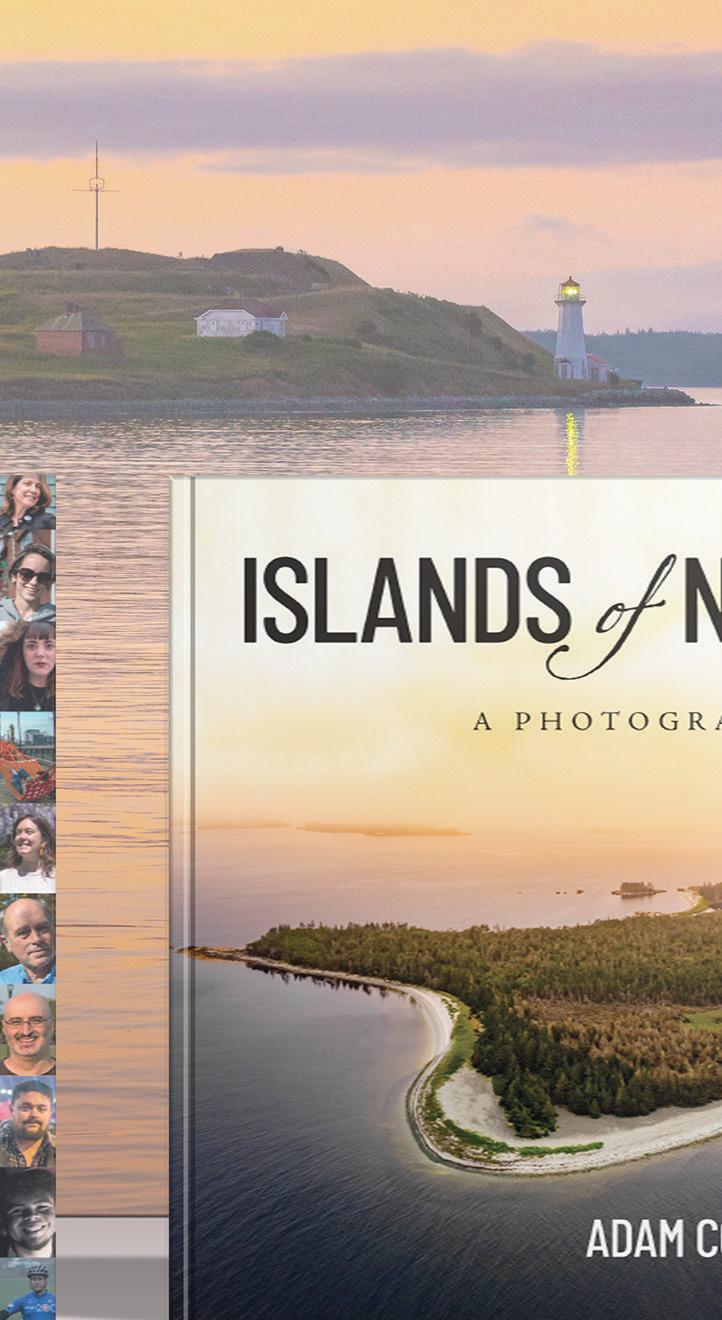



Halifax faced much uncertainty in 2022, but there are people who give us hope for better days ahead
Tammy Fancy By Trevor J. Adams trevoradams@unravelhalifax.ca UnravelHalifax @UnravelHalifax unravelhalifaxAfter two years of pandemic disruptions, many beloved holiday events return. See page 8.
Acouple of years ago, I wrote a column about the future challenges that I imagined Halifax would face.

Among the topics I omitted: a COVID pandemic, a collapse in confidence in policing, Tim Houston’s provincial government, that #FreedomConvoy nonsense, rampant inflation, war in Europe, a cost-of-living crisis, a housing crisis, and ... pretty much everything else that’s happened since March 2020.
It was enough to make me foreswear my crystal ball.
But as one of the most extraordinary years in Halifax’s history winds down, I can’t help but wonder about the future again. In 2022, we saw tantalizing signs that a long-promised transition to a more livable and desirable city might be resuming from its pandemic slumber.
A new waterfront home for the Art Gallery of Nova Scotia was in the works, until Premier Houston called it off in July, citing rising costs and economic pressures. This, despite the fact that culture was a small and shrinking portion of the latest provincial budget, as other departments saw their allotments increase.
Some in the arts community are undaunted, saying the project is inevitable, and will resurrect when the economic picture improves. Others are dismayed, saying it shows a government uncommitted to the arts and unfocused in its priorities. Will the Art Gallery of Nova Scotia get its new home anytime soon? Alec Bruce investigates on page 42.
A rare sally against the city’s long-entrenched car culture offered another glimmer of light, as HRM unveiled a pilot project to make the east end of Spring Garden Road pedestrian-only. With poor communication and little effort from law enforcement, drivers (largely ignorant of the project) continued to frequent the street, and the municipality soon abandoned the effort.
The project’s sloppy execution and abrupt failure is a disappointment to roadsafety advocates, giving little confidence that HRM will meet its promises to keep working to reduce road deaths and make Halifax a more accessible and walkable city. On page 37, Phil Moscovitch explores what went wrong and what the future holds.
And spotlighting how growing numbers of Haligonians are struggling to make ends meet, local businesses are reporting a dramatic increase in shoplifting.
Media often report on shoplifting as if it’s nothing more than the latest fashionable crime wave. But experts tell us it’s a reliable barometer for how our most vulnerable citizens are faring in this economic hurricane. After all, few people steal milk, bread, and other staples just for the thrill of it. Chris Benjamin gets the story behind the story on page 33.
Yet where there are storm clouds, there are also rainbows. In Halifax, they take the form of the people who are undaunted by 2022’s turmoil and are continuing to work to change our city for the better, undoing systemic racism, championing the environment, campaigning for mental health, and attacking poverty.
In our cover story, we’re excited to again celebrate the changemakers, profil ing the Haligonians — many of them with little attention or support — who are working to give us all a brighter 2023. See Janet Whitman’s story on page 22.
As the world juniors return to Halifax, hockey faces scrutiny like never before. See page 17.
Sign up for our newsletter, subscribe, get web-exclusive reports, and explore the free Unravel archives at unravelhalifax.ca.
Fred Fiander
Crystal Murray

fredfiander@unravelhalifax.ca
crystalmurray@unravelhalifax.ca
SENIOR EDITOR
Trevor J. Adams
trevoradams@unravelhalifax.ca
Jodi DeLong
Lori McKay
Janet Whitman
jodidelong@unravelhalifax.ca
lorimckay@unravelhalifax.ca
janetwhitman@unravelhalifax.ca
Linda Gourlay
lindagourlay@unravelhalifax.ca
Stephanie Balcom
Connie Cogan
Susan Giffin
Pam Hancock
stephaniebalcom@unravelhalifax.ca
conniecogan@unravelhalifax.ca
susangiffin@unravelhalifax.ca
pamhancock@unravelhalifax.ca
SENIOR DIRECTOR CREATIVE DESIGN AND PRODUCTION
Shawn Dalton
shawndalton@unravelhalifax.ca
ART DIRECTOR
Mike Cugno • mike@acgstudio.com
PRODUCTION COORDINATOR
Nicole McNeil
nicolemcneil@unravelhalifax.ca
PRODUCTION AND DESIGN ASSISTANT
Kathleen Hoang
Roxanna Boers
Andrezza Nascimento
kathleenhoang@unravelhalifax.ca
roxannaboers@unravelhalifax.ca
andrezzanascimento@unravelhalifax.ca
Sam Ross • samross@unravelhalifax.ca
Zoey Zsingor • zoey@acgstudio.com
Unravel is published six times annually by: Metro Guide Publishing, a division of Advocate Printing & Publishing Company Ltd. 2882 Gottingen St., Halifax, N.S. B3K 3E2 Tel: (902) 464-7258, Sales Toll Free: 1-877-311-5877
Contents copyright: No portion of this publication may be reprinted without the consent of the publisher. Unravel can assume no responsibility for unsolicited manuscripts, photographs, or other materials and cannot return same unless accompanied by SASE.
Publisher cannot warranty claims made in advertisements.
SUBSCRIPTION SERVICES
Contact toll free: 1-877-885-6344
subscriptions@unravelhalifax.ca
PO Box 190 Pictou, N.S. B0K 1H0
If you are a Nova Scotia resident, subscribe now for free. Other provinces of Canada, $25. U.S.A. $40. Int. $75. (Taxes not included)
Subscriptions are non-refundable. If a subscription needs to be cancelled, where applicable, credits can be applied to other Metro Guide Publishing titles (East Coast Living, Unravel Halifax, or At Home on the North Shore). Please note that each circumstance is unique and election to make an offer in one instance does not create obligation to do so in another.
Canada Post Publications Mail Agreement No. 40064799


Return undeliverable Canadian addresses to: Subscriptions, PO Box 190 Pictou, N.S. B0K 1H0 Email: subscriptions@unravelhalifax.com
Printed by: Advocate Printing & Publishing, Pictou, N.S., Canada


AMEETA VOHRA is a news and sports writer with work published throughout North America. Her Halifax Magazine story “Thunderstruck” was a 2020 Atlantic Journalism Awards silver medallist.


JANET WHITMAN is a city-and nature-loving journalist who divides her time between Halifax and her cottage on the Northum berland Shore. She’s happiest digging in the dirt, picking up a hammer, or messing around in the kitchen.


PAULINE DAKIN is a journalist, professor of journalism at the University of King’s College, and the award-winning author of Run, Hide, Repeat: A Memoir of a Fugitive Childhood

BRUCE MURRAY has been creating food and lifestyle photography for more than 20 years in the Maritimes and in his original studio in Vancouver. visionfire.ca, @VisionFire
KATIE INGRAM is a freelance writer, author, and journalism instructor based in Halifax.
MARIANNE SIMON is a writer and subeditor and has published many children’s stories, articles and poems in magazines and newspapers. Her interests include teaching and conducting Englishconversation classes.

ALEC BRUCE is an awardwinning journalist whose by lines regularly appear in major Canadian and American publica tions. He recently completed a master of fine arts in creative nonfiction at the University of King’s College in Halifax.


CHRIS BENJAMIN is a journalist, editor, and fiction writer. His fourth book, Boy With A Problem, was shortlisted for the Alistair MacLeod Prize for Short Fiction. His book, Eco-Innovators: Sustainability in Atlantic Canada, won the Best Atlantic-Published Book Award and was a finalist for the Richardson Non-Fiction Prize.
COLLEEN THOMPSON is an award-winning writer and photographer. She favours writing about food and drink and the storytelling behind it. She recently published her first book, Monkey Weddings & Summer Sapphires: South Africa to Nova Scotia Instagram: @monkeyweddings
PHILIP MOSCOVITCH is a frequent contributor to Unravel Halifax, Saltscapes, and East Coast Living, and the author of Adventures in Bubbles and Brine — a book about Nova Scotian fermentation stories and traditions.


Art, music, theatre, and more — discover the season's can’t-miss events


Just For Laughs brings the Emmywinning comic and his From Scratch tour back to Halifax. Noted for his writing chops and versatility, Mulaney is a former Saturday Night Live writer — he teamed up with Bill Hader to create the iconic Stefon character — and has returned to host the show five times. ticketatlantic.com
Examining issues and concerns that are intertwined with the systems of influence, authority, and control, this exhibition highlights art’s ability to give voice, raise awareness, and challenge the status quo through sculpture, installation, video, painting, and drawing. Featured artists include Lucie Chan, Mario Doucette, Jane Ash Poitras, and Brendan Fernandes. artgalleryofnovascotia.ca
Without Symphony Nova Scotia’s usual holiday concerts, Christmas just didn’t feel the same these last few years. Now, the now the beloved shows are back, with Heather Rankin returning to the stage Dec. 22 and 23. Symphony Nova Scotia, the Rising Tide Irish Dance Academy, and the Halifax Boys’ Honour Choir will be among her guests at this rollicking concert, replete with yuletide classics and Rankin Family favourites. symphonynovascotia.ca
Elf became a classic Christmas film almost immediately after its launch in 2003, and the stage version is likely to similarly delight, as audiences join Buddy the orphan on a journey from Santa’s workshop to New York. There he processes the revelation he’s a human rather than an elf, and searches for his father. neptunetheatre.com
Recently inducted into Canada’s Walk of Fame, Ryder has spent the last two decades building a (well-earned) reputation as one of the country’s top singer/songwriters, defying genre with her work in folk, indie rock, jazz, and pop. This tour focuses on her latest album, The Art of Falling Apart, which won a Juno award in 2021. sonicconcerts.com
In their final home game before the holiday break, the Mooseheads host their Maritime rivals from Moncton. It’s typically a spirited, high-energy battle, as hockey’s rising stars battle for a chance to advance to the playoffs and (if their prayers are answered) the national championship. halifaxmooseheads.ca
As Alice Xu (name changed) was growing up in a small village in China, she often wondered about the outside world and what it would be like to live in another country.

“Canada seemed to be a good place to come to,” says Xu. “So, after finishing high school, I decided to do my higher studies in Canada.”
Xu landed in Toronto in July 2016, and enrolled to study tourism and hospitality in Halifax. In those days, it was easy to secure accommodation at the university residence in a spot reserved for international students.
She needed to learn English before starting the three-year course.
“The university was offering English-language training for the international students,” she recalls. “I made up my mind to master the language. But it was not easy. I started to speak only English to everyone despite the fact that my grammar and pronunciation were not correct. Talking to people helped me to build up my confidence.”
Her first few weeks in Canada were the toughest.
“All that I read about Canada while I was in China did not help me in any way,” she says. “Being here was a totally new experience. I was terribly lonely, and I found it difficult to make friends. I missed home and my parents. Then slowly I made a few friends among my classmates and the other students in the residence.”
After a year, Xu found a part-time job in a restau rant, which introduced her to a Canadian workplace for the first time and let her use some of the skills she was learning in school.
“I graduated in 2019 and was determined to find a fulltime job,” she says. “I soon found a job with a government institution in Halifax. The next challenge was finding an apartment to move into. It took a lot of searching, but finally I did find a suitable one-bedroom apartment.”
After that, adapting to life in Canada seemed to come easily, particularly without the financial burdens many newcomers face. “I think I am very fortunate,” she says. “My parents supported me through university and paid for some of the other expenses.”
While she’s largely happy with her new life, she’s seen racism in Halifax.
“Some of the Canadians resent Asians and people of colour,” she says. “Immigrants are not well accepted or encouraged to settle down here ... I recall an incident that happened in a liquor store. I went in there to pick up a couple bottles of beer. As I was looking around, I heard an attendant talking loudly to her colleague. ‘These Asians, they buy up all the rum and sell it in the black market. So, when an Asian comes looking for rum, I tell him we are out of it.’”
Xu still finds the incident shocking, and believes she was intended to overhear it. She adds that she feels strongly about the way immigrants are treated, and wants everyone to get their due respect and freedom.
These days, she’s working on obtaining her per manent resident status. “I will be happy when that happens,” she says. “My parents will retire in seven or eight years. After that, they plan to come over to Canada to live with me.”
She bubbles with enthusiasm when thinking about building her new life here. “Coming to Canada was good for me,” she says. “I have a happy life here, and I have made some very good friends. Things are really going well for me.”
And to all those young people planning to make Canada their home, Xu says, “Any amount of preparation before coming here will not help. After you reach here, immerse yourself in the Canadian way of life, and take up part-time jobs. If you are willing to adapt easily, you will have a happy life here.”
Often overshadowed by that other December holiday, Hanukkah celebrations are vibrant in Halifax
BY KATIE INGRAMKnown as the Festival of Lights, Hanukkah may have a bit more glitz and glamour these days, but this is part of adapting the holiday to fit its location while retaining its roots.
“Traditionally, everybody lights candles: one candle on the first day, two on the second, three on the fourth, and so on until the menorah is filled with eight, so that’s traditionally pretty much the same,” says Aviva RubinSchneider, office manager of the Atlantic Jewish Council.

For Haligonians, the holiday has grown to include things like putting up white and blue lights, much like those celebrating Christmas. The city also hosts a giant menorah lighting at Grand Parade. Chabad Lubovitch of the Maritimes, an organization supporting the Jewish community with events and programs, started the tradi tion in 1995.
The story of Hanukkah (or Chanukah) dates to 174 BC when the Seleucid Empire ruled the Jewish people and wanted them to follow Greek customs and religion. Soldiers attacked Jewish sites when they refused. Jewish fighters finally took back one of the temples, but they only had enough oil to light their sacred fire for a day — or so they thought. The fire lasted eight days, which is where the eight days of Hanukkah comes from.

The Jewish community here is almost as old as Halifax itself. The first Jewish settlers arrived in spring 1750, the year after the British founded the city. By 1752, there was a tiny Jewish community of about 30. History doesn’t record how they celebrated that first Hanukkah, but it would have been small and private.
Halifax’s Jewish community grew little in its early years. Many who settled in the city would move elsewhere. This was “due to a slowing of immigration, assimilation and an economic depression,”according to Halifax’s Beth Israel Synagogue’s website.
For those who stayed, it wasn’t until 1890 that an official congregation was formed with the Baron de Hirsch Hebrew Benevolent Society. However, the community was still without a synagogue and would meet in rented community halls and members’ homes.

“As to how people incorporate Hanukkah into their life, it is really a personal, family matter,” says RubinSchneider. “We live in the diaspora, in a small Jewish community, and people here will adapt to what is available to them.”
As of the 2016 census, 1,485 Jews called Halifax home, a tiny community compared with larger popula tions like Toronto, which is just under 60,000.
Rubin-Schneider says larger-scale events in smaller communities help educate those who don’t celebrate.
“It’s not that they don’t know there’s other holidays, it’s that they sometimes don’t know anything about them,” she says. “So, it brings up the question of how do we educate the public? Here we are showing that it’s not just Christmas time. Even though 99.9 per cent of the city is decorated in Christmas, that 0.1 per cent has a menorah up and recognition is there and awareness and that’s a wonderful thing to have.”
Outside of giant menorah lightings and lights, Hanukkah in Halifax retains the tradition of together ness with in-home events, such as latke parties, and community events at the synagogue.
The Halifax Explosion heavily damaged the Starr Street synagogue (shown here in the 1960s).
“In their homes, people may have a family Hanukkah party; they may have traditional foods or a nice dinner … things that are made in oil or sweets to represent the miracle,” says Rubin-Schneider.
And while some people give a gift per day over the eight-day period, others go a different route. She says that in Israel, for example, the focus isn’t on gifts. “Some people will give a book every day, or they’ll give some money because that’s what it’s about: the coins, the games, and the dreidels,” says Rubin-Schneider. “That’s kind of the teaching part of Hanukkah.”
Christmas might have influenced a few changes. “I think some people just adapt to what’s going on around them and so their kids don’t feel left out when gifts started to be given, but it really is a personal, family thing.”
Hanukkah’s dates are tied to the lunar calendar. It doesn’t always align with Christmas (as it does this year). “Kids in Jewish families will feel like they have a holiday around the same time as 90 per cent of their friends,” Rubin-Schneider says.
Hanukkah 2022 starts on Dec. 18 and ends at sunset on Dec. 26.
In 1895, the first synagogue opened on Starr Street, on land that was eventually mowed down for Scotia Square Mall. In 1917, it was damaged in the Halifax Explosion and a new synagogue opened on Robie Street three years later.

By the 1950s, Halifax’s Jewish community had grown enough to support two synagogues: Shaar Shalom, a conservative synagogue opened in 1953, while Beth Israel, an orthodox synagogue opened in 1957. Both are on Oxford Street.
Halifax now has a lively and vibrant Jewish community of approximately 2,000, the largest east of Montreal, according to the Atlantic Jewish Council on Spring Garden Road.
Editor’s note: This is the first in a recurring series of stories exploring the growth of different faith and cultural communities in Halifax.

It’s been a daunting few years for Nova Scotia’s live theatre scene, and the drama isn’t over — talking with industry insider Chris O’Neill
Theatre has always been central to Chris O’Neill’s life — her mother was an actor and her father was a director and playwright.
When she was seven years old, Mermaid Theatre did a puppet show at her rural community school and she was hooked. She loved the idea that she could build a career by performing.
 BY AMEETA VOHRA
BY AMEETA VOHRA
O’Neill met Ken Schwartz in high school, and they began a partnership by creating a youth group con nected to Theatre Arts Guild at Pond Playhouse in Jollimore, near the Northwest Arm. They developed a theatre production featuring world-renowned opera singer Barbara Hannigan and toured to local high schools. After living in Montreal and Ireland, the pair came back home to Nova Scotia where they wanted to help grow local theatre.
O’Neill is now co-chair of Theatre Nova Scotia and executive director of Canning’s Ross Centre of the Arts and Two Planks and a Passion Theatre, which she cofounded with Schwartz. She speaks with Unravel Halifax on the state of live theatre in the province.
The role of government: “We’re not postCOVID in any way, especially in the theatre. A few weeks ago, we had to cancel 11 of our performances. What I see is a failure of leadership in that regard because we’ve gone from ‘We’re all in this together’ to ‘Do what feels right for you,’ and that is a horrifying change. That lack of leadership is now being seen in the way that people are interacting with each other, and that for me is very difficult.”
Surviving the pandemic: “(Nova Scotia Chief Medical Officer of Health) Robert Strang has been a gem throughout. He’s been very responsive. Specifically with theatres, he’s been very much trying to support us and understand what the challenges we face are, but unlike a restaurant or a bar, when they say, ‘OK, great, you can open next week,’ a the atre can’t because we have to rehearse, and we couldn’t come together to rehearse. By the time we could, it was too late for the season.”
COVID’s lasting impact: “It took a really hard toll on many theatres and individual artists. We’ve seen artists who have left the profession … The whole gamut of arts admin istrators, technical crew, everybody involved in the art of making theatre — people who’ve just said, ‘It’s just scary; we want to be able to know that we can have a family or be able to afford to live,’ so they’ve left. And other peo ple who decided not to go to theatre school, not to go and get that education so they could become that next generation.”
Community responsibility: “We’re still masked at the centre when we’re inside because we feel strongly that every part of our community matters. We don’t know what somebody else’s situation is and it’s our responsibility. Masks are so easy. Vaccina tion is so easy. If all things were equal, which they are not, but for the vast majority of the population, it is an easy decision to make and we make it for each other, not just for ourselves and that’s the message that I think has really been lost in the last little while.”

Filling the seats: “The difficulty we’re still having is that while we’re doing everything we can, that’s not being repeated out in the community. That’s very complex, because theatres are still holding ourselves to a stan dard that nobody else is, and I don’t think we should lower our standards. But we don’t have a lot of support for maintaining that standard, and audiences are just not com ing back.”
Road to recovery: “What was amazing for me … was the determination and the dedi cation of people saying, ‘We’re artists, and we need to make art, but also we need to engage our community.’ We need a way that they could support the community as well as give them something to look at to be inspired and moved by and laugh at.”
Bolstering diversity in Nova Scotian theatres: “Theatres are at the forefront of social changes because they’re made up of individuals who are so supremely con nected to different communities. Now, that doesn’t mean we have historically done a good job. We have not as a collective, but I would say that even pre-pandemic, this is work that was starting and being under taken with a lot of thought and dedication. We’re nowhere near where we should be. It’s a long, slow process. It’s about reflect ing our communities and our communities are different. There’s not a one-size-fits-all in terms of what the approach should be.”
Building audiences: “Audiences are still rel atively homogenous, so we need to build new audiences and that takes resources. I don’t mean at all to diminish the passionate peo ple that come to the theatre, but we do need to, in some cases, break down biases there too ... And say, ‘Yes, this person might be of colour, their story is beautiful, and the way they tell the story is beautiful, and whether they’re in Shakespeare or whether they’re in a new Shauntay Grant play, it doesn’t mat ter who you are, you should come see this because there will be something in this for you.’ I wish that economics weren’t part of it. But they sometimes are just in terms of get ting enough support — that’s something we need to work with governments on.”
What should government do next? “All of the supports have disappeared, both feder ally and provincially. But we’re not through (COVID) ... It’s going to be at least two more years before we’re back up on our feet, and that’s true across the country. Many of our sponsorship or advertising dollars have dried up because businesses are struggling. That’s one revenue stream that’s really dried up for a lot of us, but then the other thing is just our box office (revenue) … We need some more governments to step up and to do more about that.”
What can people do? “Come out to see stuff; see everything you can. You won’t like some of it, you will be astonished that you
have never discovered this theatre company or this group of actors or this kind of perfor mance before ... We need people to make it their habit and if they haven’t done it before, to take that leap into the water … They can write and call their MLAs and say we need to increase funding for the arts. We have been stagnant for 20 years, and we can’t cope with inflation anymore. We can’t cope with the change in the living wage.”
Where we’ll be in five years: “There has been such grit and determination through these last three years, and I’m really excited to see what’s going to happen. The other thing is we’ve learned stuff from the pan demic, and we’ve learned to collaborate sometimes with new people from all around the world. You’re going to see much more diverse theatre across the province.”
This interview has been edited for concision and clarity.
Chris O'Neill in The TempestRising interest rates have chilled demand, but experts say Halifax’s housing market continues to favour sellers
BY JANET WHITMANHalifax has a housing shortage and the notion that property owner ship is a sure-fired moneymaker deserves a big part of the blame.
Economists call it “extrapolative expec tations” — people expect recent trends to continue, regardless of economic factors that suggest otherwise.
In the case of Halifax’s housing market, who could blame them? The average price for homes sold for the year-to-date through August in the urban core increased 66 per cent over past five years, according to the Nova Scotia Association of Realtors. At the same time, the number of homes available for sale is well below average. Vacancy rates for apart ments remain at a record-low one per cent. Average monthly rents keep climbing. And demand is heating up again for Airbnb rentals as the world emerges from COVID lockdowns.
During a boom, homebuyers often overes timate demand. During a bust, the opposite is true. The dynamic seems to be playing out in Canada’s two most expensive markets, Toronto and Vancouver, where prices are dropping as a jump in interest rates cooled the overheated buying frenzy during two years of COVID.
In Halifax, prices and wild bidding wars have retreated since spring. After peaking at north of $600,000 in April, the average price is back down below $500,000. But observers think the city will remain a sellers’ market, with homes retaining much of their value, and likely gaining over the long term.
Houses and condos here are still cheap in comparison to other small Canadian cities like Victoria, B.C. and Kitchener-WaterlooCambridge, Ont. And the market seems to have no shortage of buyers: locals scrambling to get in while they can, newcomers, and inves tors inside and outside of the province seeing an opportunity to make money on short-term or long-term rentals, with both in short supply.
New research from the Bank of Canada early this year found investors are account ing for a bigger portion of the market here.
But the buying, anything from people getting a second home to landlords looking for longterm or short-term rental properties, is still shy of the Canadian average.
“I don’t see a crash coming or any weird adjustment,” says Jenna Ross, a property man ager who started investing in rental properties with her husband a decade ago. “I think we’re just beginning. We’re the next big city that’s still affordable and very attractive to people.”
26% The drop in the number of homes sold, at 3,864 for the year through August versus 5,238 over the same period last year, reflecting the tight supply
19% Mortgaged home purchases by investors last year, up from around 14 per cent in 2014, but below the nearly 22-per-cent Canadian average
18% The surge in rent for a two-bedroom from a year ago to $2,090 a month
The average price of homes sold for the year to date at the end of August, up 66% from $289,029 five years ago
1,026 Number of Airbnbs for rent at the end of August, rebounding to August 2019’s 1,302 after dropping to 777 in August 2021 during the pandemic
$609,93885% The occupancy rate for Airbnbs in July
Bidding wars and high-priced sales drove the market’s peak average price to a record high in April 2022
Title: “Grafton at Blower’s Street, (Pizza Corner)”
Medium: Acrylic on wood panel, 24”x30”
This painting is part of a body of work Jack Ross recently completed for his solo exhibition Wanderings at Argyle Fine Art.
“Pizza Corner is one of many familiar sites that I’ve chosen to work from in attempting to capture the experience of walking through the city at night,” he explains. “I always work directly from places I’ve expe rienced in person, sometimes using sketches, snapshot photos, or painting on site en plein air. I’m exploring the way that brushstroke, colour, and loosely referenced detail can suggest a sense of place while leaving room for my viewers to project their own memories.”

Born in Halifax, Ross graduated from NSCAD University in 2012, and has taught painting and draw ing with NSCAD’s Extended Studies Program since 2014.
He’s exhibited at many local galleries and events, including the Craig Gallery at Alderney Landing, the Anna Leonowens Gallery, 14 Bells Fine Art Gallery, Dine by Design East, Nocturne Halifax, the Ice House Gallery, and the Chase Gallery. Argyle Fine Art repre sents him in Halifax.





















































 BY TREVOR J. ADAMS
BY TREVOR J. ADAMS


Symphony Nova Scotia’s Enough Room podcast offers a unique and hyper-local perspective on the arts, giving fans a chance to eavesdrop on knowledgeable insider conversations. The pod cast and video series features the symphony’s artistic leaders discussing issues around diversity, inclusivity, and expanding Halifax’s collective musical horizons.

In a recent episode, music director Holly Matheson joins trailblazing African American conductor Jeri Lynne Johnson for an intimate talk about the pan demic’s impact on live music, the intersection between culture and politics, barriers for people of colour in the arts, and much more.


The day after Christmas, one of the most highly anticipated events on the international hockey circuit returns to Halifax.
The International Ice Hockey Federation’s world junior championship, which runs from Boxing Day until Jan. 5, has become a rite of the holidays for many Canadian families, but a dark cloud hangs over the tournament this year.
In May, reporter Rick Westhead broke news that the organization paid a settlement to a woman who says members of Canada’s junior men’s team sexually assaulted her when they visited London, Ont. for a Hockey Canada golf event in 2018. Police continue to investigate that incident, along with a reported gang rape by Canadian players in 2003, the last time Halifax hosted the tourney. In September, CBC’s The Fifth Estate reported that police across the country have investi gated at least 15 allegations of group sexual assault by junior hockey players, with 50 investigated and 25 charged.

Amid calls for an investigation to see if management used public funds to settle the 2018 Team Canada case, the federal government froze Hockey Canada’s funding. Soon after, it emerged that the organization settled many sexual assault cases over the years, drawing $7.6 million from player membership fees collected across the country.
The scandals haven’t appeared to have much impact on ticket sales for Halifax’s upcoming world junior tournament. According to an International Ice Hockey Federation press release, 50,000 fans have entered a draw for a chance to buy tickets.
Some fans are uncertain, though. Before she was a researcher studying hockey and sexuality at Saint Mary’s University, Cheryl MacDonald was a passionate fan, drawn to major-junior hockey at age nine when her hometown of Moncton got its first team. The world juniors would normally be highlighted on her calendar, but she’s unsure whether she’ll even watch this year’s tournament.
“As a hockey fan, you don’t always want to criticize or unpack the uglier parts of your sport,” she says. “With everything that has happened with Hockey Canada in recent months, we’re starting to know that hockey culture isn’t always a safe and enjoy able space for everybody.”
It’s left her questioning her love of the sport.
“My main conflict is wanting to support the athletes because I know we shouldn’t be painting the athletes with the same brush (that) we should be painting the culture with,” she says. “When I think about some of the (players) that I’ve known and enjoyed watching, in some ways, it would make me sad to not be there supporting them.”
Mac Ross, a sport-management profes sor at Western University in Ontario, says the assaults and payouts are a product of the current hockey culture, which balances on pedestals of violence and nationalism.
“When you mix them both, it can be very problematic,” he says. “When national ism is involved, that violence can be readily rationalized away ... It’s just completely ignored and spun into something that isn’t nearly as problematic sounding as it truly is. It has infiltrated every aspect of hockey, from hazing, fighting on the ice, to assaults on women off the ice.”

Hockey Nova Scotia’s executive direc tor Amy Walsh says her sport has missed an opportunity to evolve.
“Hockey, at its best, is an amazing sport that I believe has the power to develop indi viduals and build communities, but it hasn’t adapted to change the way the world works now and what people want out of the game,” she says. “There hasn’t been the change required to evolve, grow and be more inclu sive, so it’s been closed-minded. I think it’s an opportunity to be more open-minded and inclusive.”
The high cost of playing makes hockey inaccessible to many, particularly in contrast with sports like soccer. Parents can spend thousands of dollars in hopes of developing their kid into the next superstar. It gives many players an inflated sense of importance.
“They’ve tried hard to improve hockey’s cultural and social diversity through cam paigns meant to attract people of colour, newcomers to Canada, and the LGBTQ+ community,” Ross says. “Those consistently run into roadblocks because the culture of white masculine supremacy within the sport is so deeply entrenched. It’ll take a long time to disrupt it completely.”
The situation has also given women and marginalized groups a message: until change happens at the organization’s top, the sport’s ugly side will persist.
“I think that’s the toughest thing for peo ple to swallow,” Ross says. “When you have an organization saying that they do want to expand the sport and ensure people are included, but they’re only standing up for a handful of people who represent the white male privilege … instead of the people that are recording abuse.”
“Hockey, at its best, is an amazing sport that I believe has the power to develop individuals and build communities, but it hasn’t adapted”
— Amy Walsh, Hockey Nova Scotia
Amy Walsh says she looks forward to the day when hockey is more representative of the Canadian community.

Mac Ross says the assaults and payouts are a product of hockey culture, which balances on pedestals of violence and nationalism.
It’s time for Hockey Canada to practise what it’s been preaching.
“The way they’ve treated women in this recent round of sexual assault allegations shows that there’s a disconnection between their stated objectives and what their actions and culture are representing,” he says.
Hockey Nova Scotia has been trying to bridge that gap. In December 2019, officials launched a diversity task force to bring recommendations on eliminating discrimination, racism, and abuse in the sport to the Hockey Nova Scotia’s board of governors.
In spring 2021, the task force report identified nine recommendations, which the board unanimously accepted. One of those was adding a permanent diver sity and inclusion chair, among efforts to build diversity amongst the board, staff, councils, and committees.
“As hockey leaders, we have a responsibility to bring about change,” Walsh says. “It was extremely powerful. So many people came forward with their stories and solutions on how the game can be safer and more wel coming. It was identified through that work that hockey culture needed to be addressed. Hockey Nova Scotia would not be able to build (diversity) ... A real culture shift was needed. Then we started hard, real work, which has been great. We’re not stopping; it’s just starting.”
And this fall, Hockey Nova Scotia launched a Future Hockey Lab in response to suggestions made during consultations.
“It is at arm’s length, which was important to ensure they had the ability to live out the mission, which is to enable the creation, experimentation and testing of game-changing innovations,” Walsh says. “It’s the first social innovation lab in the world, and really, it’s about bringing diverse groups together to come up with solu tions and innovative ideas on improving the hockey culture and making it more credible.”
Hockey Nova Scotia is working with Hockey Canada to let people share complaints anonymously for investi gation by an independent third party.
“That’s a really important step because what has happened historically (was that) everything is kept quiet,” Walsh says.
The organization is also hoping to develop the women’s game further.
“It is by far the biggest opportunity for growth,” Walsh says, adding that only 15 per cent of Hockey Nova Scotia members are women. “We did a lot of work to look at how you can grow the female game, and we put together a plan, and we’re in the process of implement ing that plan.”
In October, as outcry over Hockey Canada’s response to the sexual assaults grew, Hockey Nova Scotia stopped transferring player fees to Hockey Canada. “Until our values at Hockey Nova Scotia are reflected by Hockey Canada’s senior leadership, we simply cannot support hockey’s national governing body,” the organization says in a press release.
Since the provincial organizations have a closer relationship with local minor hockey associations, it enabled Hockey Nova Scotia to be proactive by listen ing, reacting to the outcry and criticism from parents of young hockey parents and act. That was a much differ ent approach than Hockey Canada took, and Ross says it was an impactful power play move.

“In doing so, they gave the parents a degree of visibility and financial leverage that they simply didn’t have before,” he says. “This, combined with the exodus of corporate sponsors, put a ton of pressure on Hockey Canada’s leadership. While the corporations took away a chunk of the leadership’s financial base, provincial organizations like Hockey Nova Scotia threw their ability to govern and direct the provinces into question. All together, the actions represented an insurmountable obstacle for this unethical and immoral leadership team to overcome.”
The national groundswell of pressure that finally led to the resignation of Hockey Canada boss Scott Smith and the board of directors.
Before the resignations, politicians were question ing their support of the upcoming championships. Now, HRM Mayor Mike Savage and local councillors say they’re again onside, but Ross says they should stand by.
“We have an action plan developed as part of a broader crisis management campaign,” he says.
“We have resignations, but there is nothing, yet, to suggest the sort of cultural change the sport requires will even happen. Let’s not rush this. Let’s get it right. Life will go on without the WJC.”
With the world junior championships looming, the question becomes whether people should support events that involve Hockey Canada or disengage until there’s meaningful change. Ross concedes there will be nothing significant achieved by the time of the tournament.
“Some people may be different, but the culture will be the same,” he says. “If the Maritimes do go ahead and host, which it sounds like they will, it would be best if Hockey Canada was excluded for the year. We need more time for reform.”
He encourages fans to keep up the scrutiny.
“Be vocal, email Hockey Canada, email your provincial organization, reach out to your government representatives,” he says. “Keep the pressure on until we see meaning ful change. The CEO and the board stepping down was the easy part of all this. The hard part will be initiating change and develop ing momentum for that change over time. It will require patience and persistence.”
Walsh wants people to also remember the benefits of hosting the event, though.
“There’s a huge economic impact, especially following a pandemic,” she says. “It also has the opportunity to show what ... we’re doing specifically in hockey, to bring about change and what potentially other places can learn from what we’re doing.”

With the international stage comes an opportunity for Halifax, but Ross says any city considering hosting a hockey event should consider a few things.
“Look for real tangible legacies,” he says. “What is it bringing into the city, and if we’re propping up a sport, in this case hockey, that’s constantly been in the media for its poor track record in protecting people, why would you do it? Why would you bother bringing them in?”
It could take the sport years to recover from Hockey Canada’s mishandling of the sexual assaults.
“They merely picked up that culture and packaged it up nicely for consumption, hid ing the ugly bits from public view,” he says. “Now that the curtain is pulled back and we can see the whole beast for what it is ... There have been decades with zero trans parency or accountability. The organization has been grotesquely mismanaged. That sort of thing can’t be corrected overnight.”
Hockey Canada’s new leadership choices will set the tone.
“Women have to represent 50 per cent of the board,” Ross says. “There needs to be folks with hockey experience, but also board members with skills and abilities relating to equity and inclusion ... Hockey is producing a very specific sort of masculinity, which is then celebrated and protected. This is all tangled up in nationalism, making it very difficult to resist. We have a rare moment here to reset and chart a different course. We must take advantage of it.”
Walsh dreams of that future.
“I would like to see that hockey is more representative of the Canadian community and the culture,” she says. “I’m a big propo nent of using sport as a vehicle for good, and it will be about developing individuals and building community.”
“You don’t always want to criticize or unpack the uglier parts of your sport (but) hockey culture isn’t always a safe and enjoyable space”
— Cheryl MacDonald, researcher
Pushing for accessibility rights. Fund ing affordable housing. Reckoning with racism. Protecting our environment. Tackling immigrant barriers. Listening to diverse voices.
Change that’s long overdue is sweeping through K’jipuktuk (the original Mi’kmaw name for the Halifax area).
The transformation isn’t coming on its own. Unravel Halifax recently talked with four Haligonians who are helping to reshape the city.
Vicky Levack, who has severe cerebral palsy, thought she was falling through the cracks when she was stuck in a nursing home 10 years ago at the age of 21.
“I got myself settled and then realized, ‘This is how the system is designed to work,’” she recalls. “It wasn’t an ‘Oops.’ It’s working as intended, which is just to throw people with disabilities in a home and say, ‘There you go,’ without actually consulting them about where they wish to go and what they wish to do.”
Levack, a disability and affordable housing rights activist, knew it was morally wrong to stick people with disabilities in nursing homes and psychiatric wards. But she didn’t realize it was also legally wrong — not until her father learned about a Nova Scotia court case that found evidence the province was systemically discriminating against three people with mental and physical disabilities by housing them at a Halifax-area psychiatric hospital.

Halifax’s rapid transformation continued in 2022 — meet the unheralded heroes reshaping our city
She contacted a lawyer involved in the suit.
“He called me and said, ‘You want to get out?’ I said, ‘Is that an option?’ He said, ‘Yeah, they’re going against your human rights. They’re breaking human rights law.’ I said, ‘Hell yeah, you’ve got yourself a case. Please get me the hell out because I’m miserable.’”
Levack’s move from Arborstone Enhanced Care on Purcells Cove Road to a newly renovated apartment with a roommate has been on hold for more than a year, largely because of COVID-19. “They still have to hire caregivers,” says Levack. “I don’t know how long that will take.”
The 31-year-old has no intention of slowing down once she settles into her new home.

“People say, ‘Yay, you’ve got your own apartment. You can retire.’ And I’m like, ‘I can’t,’” she says. “I’m going to focus on getting everyone out behind me. There are around 300 people in nursing homes now in Nova Scotia in the same boat as I’m in and almost a thousand others, if not more ... in psychiatric wards and other institu tions. I’ve got a lot of work to do.”
Her predicament has also made her think more broadly about housing as a basic human right. During
the pandemic, she was a vocal spokesperson for the homeless at Meagher Park, a small West End triangle of land dubbed “People’s Park,” which became home to about a dozen people in tents before the city shut down the encampment.
“They say we have to build affordable housing, but we already have all these empty buildings that could be turned into affordable housing quickly, such as the old library downtown,” says Levack. “The problem is not going to be solved by giving giant tax breaks to developers.”
Vicky Levack is leading the fight to end discriminatory housing policies in Nova Scotia.
“ They say we have to build affordable housing, but we already have all these empty buildings that could be turned into affordable housing quickly”
— Vicky Levack, activistBruce Murray/VisionFire
Raven Davis — an Anishinaabe, two-spirit, transgender, disabled multidisciplinary artist, activist, and educator — is a leading voice for change.
After moving to Nova Scotia about 10 years ago, Davis got on the Harbour Hopper sightseeing tour, and heard a spiel on Halifax’s history from the tour guide. “I told them, ‘You’re missing quite a bit of information,’” recalls the Toronto native, who uses the pronouns they/them.
They found the experience not all that different when they visited the Nova Scotia Archives and started reading through some of the major events in the province’s history.
“One of them was, of course, Cornwallis,” Davis says, referring to British military leader Edward Cornwallis who Halifax feted as its founder for more than 200 years.
It took 25 years of protests over his racism (which included offering bounties for the scalps of murdered Mi’kmaw) before officials removed his name from a park, street, and junior-high school. His statue now sits in a municipal warehouse.
“We still have a lot of work to do to reclaim histories that haven’t even been talked about,” says Davis, whose work focuses on themes of gender, disability, and trans formative justice and colonization.
Davis notes that back in 1995, when hundreds of thousands of African American men gathered in Washington, D.C. for the Million-Man March political demonstration to improve conditions for Blacks, “every body knew what it was about.
“There’s an element of not knowing, of ‘Oh, we don’t know about the residential schools,’ or, ‘We didn’t know about slavery in Canada,’” they add. “But there is an awareness on a historical level that these issues have been going on for over 500 years.”
What is different now is that more people are speaking out against the entrenched inequities within government systems and communities, Davis says. “There are more voices standing up and saying, ‘No, this is unacceptable.’ That naturally comes with the evolu tion of humanity.”
It’s also a function of more people feeling the effects of injustices and inequities in major government sys tems, including policing, health care, and mental health, they add. “The mass shooting in Portapique is a good example. People are now questioning the RCMP and they’re not just Black and Indigenous people anymore. They’re seeing complete failures in accountability.”
“Child's Play for Them, Raven Davis Murder for Us” (2015) by Raven Davis is a macabre version of the carnival bean-bag-toss game, commenting on missing and murdered Indigenous women and two-spirit people.
The ancestors of Indigenous, African Nova Scotians, and other marginalized groups “have been doing this work for hundreds of years,” they say.
Davis has carried on the tradition by speaking out vocally and publicly in the media, online, in artists talks, in keynotes, in workshops, and within their art practice.
“I’m just part of many people who’ve contributed to this greater conversation that has fueled so much incred ible artwork, so much manifestation of our futures, and what we want to see, what we want to reclaim, how we want to tell our stories, and how we want to be repre sented,” they say. “Has there been progress? Yes. That’s usually when people start to slow down. But that’s the time where we actually have to pick up momentum.”
“ There is an awareness on a historical level that these issues have been going on for 500 years” — Raven Davis, artistRaven Davis
Achala Hewaarachchi knows first-hand how unsettling it can be to land in Nova Scotia as an immigrant, and draws on her own experience as a Sri Lankan refugee to help ease the path for newcomers.
Now working as a settlement support contact for school-aged kids with the YMCA in Dartmouth, she arrived as a student at St. Francis Xavier University in the late 1980s at age 21. She stayed as a refugee when she was unable to return home due to the outbreak of civil war.
“When I first came to Canada, there was not a whole lot of support,” she says. “Even if you have a bit of English, the culture is totally different. There are so many things you don’t think of that you need to learn to live here.”
She remembers feeling that people viewed her differently from other Canadian women. She felt overlooked and underestimated, despite her roots in Sri Lanka as a young community leader.

The dearth of support Hewaarachchi found drew her to her position as a settlement worker with the YMCA’s centre for immigrant services.
“We work with the students in elementary, junior high, and high school to help connect them with community resources,” she says. “It can take at least three years for someone to really adjust to the Canadian system and learn the language. We give them time to ask questions and be comfortable and enrol them in afterschool activities.”
Having the extra support means a lot for newcomer parents, who are often on their own without extended family to support them. “We make sure the children feel happy and safe. If the children are happy, the parents will be happy. If the parents are happy, they stay here longer.”
Last year, the immigrant school support pro gram worked with close to 3,000 students in the Halifax area, with 18 staff serving 37 schools. The staff has since expanded to 22 with demand increasing along with a wave of new immigrants.
Hewaarachchi joined the program in 1998 and worked in Fairview for 18 years. The area, along with Clayton Park and Halifax West, has been a long-time destination for newcomers. But the housing affordability crisis has meant many immigrants are having to find dif ferent neighbourhoods. With that shift, Hewaarachchi now works in Dartmouth.

No matter where immigrants come from, the needs are often similar: figuring out how to do things like apply for a social insurance number and learning English. During the COVID lockdowns, Hewaarachchi and her colleagues tried to ensure immigrant families had laptops or tablets so children could learn at home.
Perhaps the greatest contribution of the work is offering empathy.
“This summer, I got a phone call from a student I had in 1999,” she says. “He tracked me down and said he got married, had a daughter, and wanted to con nect just to say, ‘You helped me so much and I’ll never forget.’ These kids are becoming nurses, doctors, and active participants in this society and do well. You look back and they were struggling when they came. I love it. It gives me a sense of accomplishment and pride.”
‘THE BEST IS YET TO COME’ Award-winning writer and Saint Mary’s University pro fessor Alexander MacLeod works with a young and ever-diverse crop of writers to help them find their voices.

In one of his literature classes, he sometimes teaches his students Hugh MacLennan’s Barometer Rising, a 1941 novel about the catastrophic 1917 Halifax explosion that some credit as the start of Canadian literature.
“They don’t recognize that city,” the Dartmouthbased writer says. “They recognize the spaces that the characters are walking — Citadel Hill and the waterfront and all that — but the books that represent their Halifax are much more diverse, much more complicated. They understand that Halifax has a very complex, contradic tory history and you have to be able to see all of that at once in order to represent it.”
These more complex stories are emerging. “At this moment, right now, Halifax’s literature is the most diverse it has ever been. It still has a lot of work to do,” he says. “The best is yet to come.”
As the son of acclaimed Cape Breton writer Alistair MacLeod, he’s used to being around literary talent, and counts himself lucky to work with many emerging writers.
“Some of them are young, in their early 20s, so they are finding their voice in creative-writing workshops,” he says. “It’s very exciting when you’re reading a new story for the first time. The rest of the world doesn’t know that this voice is there yet. But you’re seeing it and you’re like, ‘Woah, when this hits, it’s going to really matter.”
In his own creative work, MacLeod isn’t afraid to set his short stories explicitly in Halifax or Dartmouth and “then send them out into the world and see what happens.”

One of his short stories, “Once Removed,” ran in the New Yorker this year, and many other publishers have bought his work, translating it into many different languages.
“All of these people might not have been to Dartmouth or maybe even Nova Scotia, but they recog nize, I hope, certain primal currents that everybody recognizes,” he says. “I try not to fake it. That’s what I tell my students. Try to be as honest with the forces that are important in your life. You can’t help but be shaped by the forces that are flowing through this place.”
When the writing isn’t honest, readers know.
“It kind of goes back to, whatever revolution you think is started with the Trailer Park Boys or with George Elliot Clark or with Rita Joe, (with each depicting) exam ples of people from very different ideas to the cliché of Atlantic Canada,” he says. “The Atlantic Canadian com edy, the African Nova Scotian and Indigenous voice are all very different in 2022 than they were in 1982. I just think there’s amazing work going on in every corner.”


A full-colour scrapbook of Haligonians with photographs and first-person stories, from the popular Facebook page, Halifolks. (Nimbus Publishing) nimbus.ca


Amazing human story of harbour pilots in WWII. Real history that reads like a novel: sinking of pilot boat, Hebridean – disaster with lives lost and impact/resilience of Herring Cove families Effect on war effort & SS Esmond’s fate, a surprise ending for Allies. newworldpublishing.com
$12.98 – $99.98
Spread some holiday cheer with our best-selling gift baskets and boxes. We ship within Canada and the US. Our chocolates and sweets are handmade on PEI with a Happiness Guarantee! Use code GG10 for a 10% discount online. 902-370-2697 annechocolates.com

Snuggle up in this romantic black and white printed PJ set. A classic button-top with contrast pink piping & straight leg PJ pants. takeitoutside.ca


Expertly crafted in small batches, and made with passion in Nova Scotia. Our purposely crafted candles use simple, quality ingredients - premium virgin coconut soy wax, natural wooden wicks and perfume-grade fragrance and essential oils. Two percent from every candle sold goes to the Kidney Foundation. noelandco.ca

The Quarterdeck Resort is located on Summerville Beach and features 58 beautifully appointed guest rooms, each featuring a private deck facing the ocean. Pets welcome.
5 Willow Lane Summerville Centre, NS 1-800-565-1119 quarterdeck.ca

Starting at $14
Enjoy skillfully handcrafted chocolates made with the finest sustainable chocolate and many of Nova Scotia's natural resources! Handmade from wholesome ingredients, real fruits and free of any artificial preservatives. 5151 South Street, Halifax, NS rousseauchocolatier.ca

Handcrafted Artist Teddy Bears Dartmouth, Nova Scotia 902-221-6716

bearloomteddies@hotmail.com bearloomteddies.com

$8.25 – $13.47 weekly
Pick up or have mailed out the printed edition of the Saturday Globe and Mail and/or Sunday New York Times. Please call for details. Atlantic News 902-429-5468 atlanticnews.ca
Specially priced at $1499 (until December 24, 2022)
Glacier Fire Canadian Diamond Pendant .40 carat glistening Canadian diamond pendant set in white gold. charmdiamonds.com

Our uniquely designed and scented handmade artisan soap is the perfect gift for everyone on your list. Shubenacadie, NS craftyowlartisansmarket.ca

The untold story of the “Micmac Indian Craftsmen” of Elsipogtog, a ground-breaking co-operative of Indigenous modernist artists, whose work travelled around the world.
Goose Lane Editions with Beaverbrook Art Gallery gooselane.com
Make gift-giving easy with an inspiring array of Nova Scotian created fine art and fine craft. Paintings, jewellery, pottery, rug hooking, fused glass, felt art, and more... art1274hollis.ca



Sigma offers lenses for every use starting as low as $349.99. From wide angle to super telephoto choose a lens for your Canon, Nikon or Sony camera. Moncton, NB ivanscamera.com

Classic style 1.0 carat tw. lab grown diamond stud earrings set in white gold. charmdiamonds.com


A book of sharp, feminist essays covering #MeToo, pop culture, and LGBTQ+ topics, from the long-time arts-and-culture columnist. (Nimbus Publishing) nimbus.ca
Christmas is coming. You're sure to find something special with our unique collection of jewelry and accessories. Located in Sunnyside Mall, Bedford. earthlinejewelry.com


Founding of Port-Royal & Fort La Tour (St. John): Fascinating story — intrigue, love life, Mi’kmaq relationships, war with d’Aulnay. Arrived at age 14; became Governor of Acadié (Acadia). newworldpublishing.com
Local, handcrafted gifts and so much more! Visit LakeCity Works at 386 Windmill Rd, Dartmouth shop.lakecityworks.ca


Air-pulse toys are all the rage and a great intimate gift! Reach new heights fast! Pleasures N’ Treasures pntcanada.com
Marlene Campbell’s charming and nostalgic stories will be sure to warm the hearts of even the biggest curmudgeon this holiday season. Acorn Press acornpresscanada.com

Vehicle loving children will fill up their tanks reading this vibrantly illustrated, zany ride-along tale by Doretta Groenendyk. Acorn Press acornpresscanada.com
$75

Bundle three candles and save! With 28 scents to choose from, you’re sure to find the perfect candle for everyone on your list! Fashioned from clean burning coconut soy wax and natural wooden wicks, every Noël & Co. candle is carefully hand poured and crafted in Nova Scotia. noelandco.ca


Home of the world's first Maple & Wild Blueberry Truffle. Located in Tatamagouche, NS appletonchocolates.ca
Get more warmth and comfort from 100% pure wool, with the unisex slipper from Glerups. No-itch wool. No-slip rubber. Perfect gift for this season. takeitoutside.ca


One family, stewarding three generations of Canadian Art. The ultimate gift for art lovers. Goose Lane Editions with McMichael Canadian Art Collection gooselane.com
$62.55
Matured in new oak barrels, Hennessy V.S is bold and fragrant. Its rich character is uniquely Hennessy, a timeless choice with an intensity all its own.

Available at NSLC


$599.99
Unleash the power of your smart phone and take a tour of the night sky. No telescope experience required. Moncton, NB ivanscamera.com

The “Home” of the 100% British Wool sweaters and accessories. Supporting over 250 Canadian artisans with their crafts, Scottish/ Irish items and First Nations. Open year round. 1869 Upper Water Street, Halifax, NS 902-405-0488
150 Richmond St, Charlottetown, PEI 800-565-9665
Pier 20, 1209 Marginal Rd Suite 115, Halifax, NS 902-406-2050 nwknitwear.com
from $65
Gifting made easy. Curated collections of luxury items from small businesses in Canada. Shop local. Shop small. thelittleshopbox.com

S14.99 – $59.99
Adding some spice has never been easier with intimate board games! Enjoy, connect and grow closer! Pleasures N’ Treasures

pntcanada.com

Appeals to both casual and passionate hockey fans, as well as anyone eager to follow in the footsteps of a successful professional sports organization. utorontopress.com

Peer through the lens of one emergency physician in this illuminating, behind-the-scenes view of the real impact of the pandemic. Goose Lane Editions gooselane.com
A thoughtfully curated shop filled with unusual goodies from over 50 Canadian creators. Find that unique gift that no one else will find! Drop in for the holiday season!


Historic Properties, Halifax Sunnyside Mall, Bedford Peake’s Quay, Charlottetown 902-425-3134 poshhalifax.com
$7.95 each
These irresistible bars are sure to awaken your inner child! Confected using sustainable chocolate and premium ingredients. Available in two nostalgic flavours: Gingerbread Caramel & Eggnog Caramel. 5151 South Street, Halifax, NS rousseauchocolatier.ca




First released more than 175 years ago by our founders, Glenmorangie Original is known for its mellow tones and delicacy of flavour. Available at NSLC
$12.99 – $38.99
Enjoyment for the whole family or just yourself! We carry The New York Puzzle Company, Ravensburger, Cavallini, Pomegranate, Galison and lots of others. Atlantic News 902-429-5468

@atlanticnews atlanticnews.ns.ca
Quilted coats are the trend now. Soft padding inside and special quilt pattern. Ilse Jacobsen quilt coat is a perfect gift for Fall-Winter. takeitoutside.ca

Wrap up the beach with White Point gift cards. Thoughtful and versatile – you can tuck joy, nature, golf, getaways, pickleball, romance, surf, turf, and relaxation in a Christmas stocking! Good things really do come in small packages. 1-800-565-5068
whitepoint.com/the-resort/gift-certificates
Raymond Biesinger & Alex Bozikovic
A National Bestseller! Fully illustrated, full of history, this book is the perfect gift for history buffs. Goose Lane Editions gooselane.com

A photographic exploration of Nova Scotia’s diverse islands from the celebrated photographer and author of Coastal Nova Scotia. (Nimbus Publishing) nimbus.ca

A perfect gift that lasts 25 days! Last year, San Francisco based TasteTV listed Petite Patrie Chocolate as having the top 20 best chocolate advent calendar gift on Instagram. Order yours petitepatriechocolate.com/shop


Specially priced at $3999 (until December 24, 2022)
2 carats of diamonds set in white gold. charmdiamonds.com

The Retail Council of Canada estimates the country’s businesses lose $5 billion annually to shoplifting, with its members reporting an increase in violent thefts since 2019, according to Jim Cormier, the organization’s Atlantic Canadian director. He adds the uptick leaves store owners trying to “prevent the massive amounts of theft: filling a cart up with hundreds of dollars of meats or walking out with a flat-screen television.”
He says recent security increases at local grocery stores (barriers around doors, bringing in off-duty cops to work security) aren’t about an occasional chocolate bar. For stores, it’s “constantly balancing a safe and wel coming environment for customers, with a safe and welcoming environment for staff, and at the same time protecting your product.”
When store workers catch shoplifters, he says police don’t always respond quickly, meaning employees must decide whether to detain someone until they arrive, which can be a dangerous situation.

As local store owners report a spike in shoplifting, experts recommend they talk with the people their policies most affect
Cormier says the pandemic has been challenging for the sector, with unusual behaviour from the public, including anti-maskers ranting at hapless workers. On the other hand, a July investigation by the Toronto Star suggests supermarkets are making record profits and hiking food prices faster than necessary during inflation. An April report from the Canadian Centre for Policy Alternatives says, “Food and beverage stores, such as grocery stores, made $3.9 billion more pretax profit in 2021 than they did before the pandemic, (achieving) record-high profit margins.”
“Charging people with shoplifting over and over doesn’t do anything,” she says. “Sending people to jail doesn’t keep them from stealing.”
Like an addiction, shoplifting is hard to break.

But those who have stopped, Ayles says, “figured out it was feeding an emotional need. Our program looks at root causes. All the programs and approaches based on correction didn’t change anything.”
She uses a harm-reduction model that minimizes risk factors, like walking into a store with a big bag or coat. Whatever one’s conscious intentions on entering the store, having the means can act as a trigger. She coaches participants to see the psychological struggle as “you against you” rather than “you against the world.”
Krista Dunn, housing manager at YWCA Halifax, has worked with participants living in poverty and at the margins, and has been supervising staff who do the same for 17 years. She says policing shoplifting takes a heavy toll on people living in poverty, whether they shoplift or not. “They’re followed around, harassed, criminalized,” she says.
She is concerned enhanced security makes things worse for marginalized people, “someone who looks stereotypically homeless, or youth; for them it feels more intense. It further criminalizes being poor.”
Few have thought as deeply and long as Susan Ayles about shoplifting’s root causes. She is a program man ager at the Elizabeth Fry Society in Dartmouth, and has been working with shoplifters for 30 years. She runs Stop Lifting, a non-judgmental program exploring behaviours and underlying causes of shoplifting, theft, and fraud.
When asked about possible links between shop lifting and poverty, Ayles’s answer is matter-of-fact: “It’s not that poor people are the only ones who shoplift. They are the ones who tend to get caught. It’s who gets policed: poor folks, folks of colour, folks in marginalized communities, addicted folks.”
Ayles works with people who have been caught, charged, and sentenced to a restorative justice program. Some of them steal to alleviate poverty; they take either necessities or things to sell. And she works with people who steal for emotional reasons.
“It’s a coping strategy.”
She says many people try shoplifting as youth, but those who keep doing it usually suffered a significant per sonal loss within six months of the first time they stole.
There’s a psychological release involved, a serotonin boost: “A little joy bump. If you’ve grown up in a system that tells you that you don’t count, or you’re not good at things. It’s a big ol’ ‘fuck you’ to the system.”
Ayles adds that whatever loss large retailers incur from shoplifting, the penalties for those criminalized are far worse. “I have young folks doing federal sen tences,” she says. The approach, Ayles notes, is contrary to practices of the provincial justice department, where the policy is to focus on alternatives to involving people in the criminal-justice system for petty crimes.
Recent media reports on crackdowns focus on offduty police working security at grocery stores, but often unmentioned is that their use is concentrated in lowerincome communities, stores “near public housing,” for example. In her experience as a housing worker, and previously at Phoenix Youth Programs, people mostly shoplift to consume (especially food, liquor, and makeup — usually either necessities or things made necessary by living with addiction, like alcoholism). When she worked with homeless teenage girls, makeup
“Young people were being detained because it was felt certain groups of people steal”
— Ann Divine, consultant
was about presenting oneself with pride when society had rarely given them positive reinforcement.
Dunn questions the logic of increased security, particularly in grocery stores during an ongoing pandemic and rampant inflation. “People are struggling more than they ever have before,” she says. “Food banks are a drop in the bucket. People are limited in how much they can use; you get what you get.”
Criminalizing people makes the problem worse, she says. “Now you have a record; now you can’t get a job.”
Dunn and Ayles note another problem with crack downs on shoplifting: racially profiling Black people, Indigenous people, and other people of colour. The problem is detailed in the seminal Report on Consumer Racial Profiling in Nova Scotia, which surveyed shoppers across Nova Scotia, mostly in the Halifax area.
In the foreword, Nova Scotia Human Rights Commission CEO David Shannon wrote, “Racialized individuals reported being subjected to various humili ating experiences by staff or security personnel … being wrongfully detained, ignored, searched, followed, refused services, given slow service, targeted for offen sive language, removed from a store, and questioned about their ability to afford a product.” This happened at “significantly higher prevalence and frequency rates” for “Aboriginal and African Canadian respondents.”
Ann Divine knows what that’s like. She’s a “proud woman of African descent,” principal author of the study, and CEO of Ashanti, an equity, diversity, and inclusion consultancy. “You prepare, you dress well, you make sure you have money in the bank,” she says.
Because of her personal experiences being racially profiled, she rarely uses her credit card, thus avoiding the assumption she has to borrow money. “When (my fam ily) shops, someone has to stand outside with the bags. I’ve been given strange looks, followed around in stores.”
Divine tells of buying books for her grandchildren when she felt a presence beside her. She went to another section of the store; there it was again. Same person. When it happened a third time, she loudly demanded, “Am I being followed here?”
She is confident enough to call it out, but for many the commission surveyed, it’s a deeply humiliating experience. “What we found was quite alarming,” she says. “Young people were being detained because it was felt certain groups of people steal.”
As a business owner herself (though not in retail), Divine understands management’s desire to prevent losses, which she says ultimately come back to hurt paying customers, many of whom are also suffering in the current economy. “I don’t have a problem with the barriers at the front of stores,” she adds.

Her concern is that most security staff, be they wage earners or off-duty police officers, lack the necessary training. “These individuals have to be trained in areas of unconscious bias and inclusion,” she says. “The store would say the security guard is not my responsibility, but you have hired them to keep an eye on your facility. I would encourage employers to really take note and train individuals appropriately.”
The cost of not doing so could be higher than the cost of shoplifting losses. Divine recalls the case of Andrella David. In 2009, staff at a Tantallon Sobeys accused her of stealing, based on grainy security footage of a Black woman (who was not David) shoplifting.
David took the store to a provincial human rights board, which ordered Sobeys to pay her $21,000 for racial discrimination. When the grocery chain fought the ruling, protestors showed up.
“People did boycott that particular Sobeys,” Divine says. “Our communities have quite a bit of pur chasing power.”
Cormier says most retailers are careful about their public image. “Retailers understand if there’s an inci dent, it’s not usually the security firm’s name in the media,” he says.
Gilbert Paul, a father of six from Eskasoni, now liv ing in Sipekne’katik, tweeted this August about his latest experience being racially profiled: a store employee who didn’t identify himself (but made a radio call for backup) followed him around a Walmart.
It happens often. “I have a big family,” Paul says. “When I go shopping my cart is filled up. I didn’t know it was a crime to fill your cart inside a store.”
Paul describes how he and his friends and family have been harassed — followed, receipts checked, being rushed from the store or kicked out without cause — at several different stores including government-owned liquor stores, even as white customers walk by with loaded carts unnoticed.
Ayles says there is a better way for stores to handle shoplifting. “Restorative approaches are the way to go.” That means working to understand the context of people’s underlying motivations and figuring out how to meet those needs.

The Retail Council has worked with the Nova Scotia Human Rights Commission, which developed a program to educate retail employees. “Most retailers signed on for it,” Cormier says. “They showed us what they had and asked for input from our members … Generally members were quite positive about it. Some felt that their own programs were better. But they liked the idea that they could have two programs from which to choose, and others that didn’t have, any appreciated having one.”
The retail council is also working to arrange meet ings with provincial justice ministers. “Basically our goal for all of the meetings across Canada with each provincial justice minister is to ... put it higher on their radar that when we’re talking about large theft of items,
not the small individual items, we need to get more response from police. And we understand that they’re challenged as well, so we just want to have a sit down and dialogue.”
People like Ayles, Dunn, and Divine would also have a lot to contribute to that discussion. Divine recalls a cooking program of the Clayton Park Sobeys that “opened community space to teach young people how to cook, purchase goods, understand money and how it is spent, that nothing is free and why you have to pay for it, and how to use it so there is no waste.” It showed how a business, one store in a large retail chain, could create relationships with its community.
Divine recommends retailers of all sizes “speak to community leaders. Halifax is growing immensely in terms of diversity of cultures. Businesses need to know their community; I’m sure they could learn a lot.”
In writing this story, Unravel Halifax also reached out to major grocery retailers, who refused to discuss shoplifting, plus the Downtown Halifax Business Commission, which did not respond to an interview request.
“Sending people to jail doesn’t keep them from stealing”
— Susan Ayles, advocate
Pedestrian-only streets are common in other cities. What has Halifax learned from a summer attempt to transform Spring Garden Road?
 BY PHILIP MOSCOVITCH PHOTOGRAPHY BY BRUCE MURRAY/VISIONFIRE
BY PHILIP MOSCOVITCH PHOTOGRAPHY BY BRUCE MURRAY/VISIONFIRE
It’s a sunny, late morning on Spring Garden Road. Vehicles stopped at a red light clog up the narrow street. A car with hazard lights flashing is parked on the sidewalk, while a driver blows their horn at a pedestrian using a crosswalk. It wasn’t supposed to be this way.
On July 4 of this year, Halifax closed four blocks of Spring Garden Road to cars: South Park Street to Queen Street, from 7 a.m. to 8 p.m. daily. The goal was to move buses along the street faster, and “vastly improve the quality of the experience” for pedestrians, according to Waye Mason, the councillor for South End Halifax, whose district includes that Spring Garden stretch.
It was a pilot project meant to last a year. It lasted four days.
Sara Kirk remembers being “excited” the day the pilot launched. A professor of health promotion at Dalhousie University, she’s also a long-time active trans portation advocate who loves biking. Although Spring Garden is near her office, Kirk says she generally avoids the street “because it’s noisy and generally unsafe; you never know if drivers are going to stop when you cross.” But on July 4, she biked over. “I went to the mall down there and bought some stuff, and I was thinking ‘It’s not too bad, but there are still cars.’ But the next day, there were more cars. There were more the day after that,” she recalls. “Then it was a free-for-all.”
By the end of the week, the city shut the pilot down.
The Spring Garden pilot was sup posed to be part of a longer-term transformation, turning part of the street into a car-free corridor. HRM had already banned parking on a stretch of Spring Garden, and narrowed the roadway to eight metres, in part to dis courage speeding. Expanded sidewalks and planters with trees and flowers contributed to making the street appear more pedestrian-friendly.
Spring Garden is one of the city’s key choke points for bus traffic. The street is too narrow for bike or bus lanes, so ban ning cars during peak hours would let the 800 buses a day zip through faster. At the same time, the lack of cars, along with the new street features, would encourage pedestrians to linger.
Planners deemed that shutting Spring Garden to all traffic, including buses, wasn’t practical, hence the tran sit pilot project.
The signs the city put up to inform drivers of the changes were ineffective. Drivers paid little attention to them and simply carried on down the road. A ban ner HRM had planned to install above the street didn’t even arrive until after it aborted the project. Police on the scene were unable or unwilling to enforce the new rules.
Although she is disappointed, Kirk is not sur prised the pilot failed so spectacularly. Drivers kept going down the street because there was little to indicate they shouldn’t.
“Knowing what we know about human behaviour, and driver behaviour is human behaviour, if there is a road, you’re going to drive down it,” Kirk says. “You have to physically prevent cars from going down the street to actually make it work.”
In a classic bit of understatement, municipal transportation planning manager Mike Connors told a Sept. 14 meeting that “traffic restrictions on Spring Garden Road for the pilot are more difficult to commu nicate to drivers than we had originally expected. It is now clear that a more robust traffic control plan will be required.”

Urban designer Ken Greenberg agrees. “Literally, you block off the street so nobody can drive through. You can’t have cones that people can drive around,” says Greenberg, who has served as an adviser to many cities in Canada, the U.S., and Europe, and who used to work for the city of Toronto.
“After several generations in which we really catered to the car almost completely, cities around the world are starting to take back space,” he says. But for projects that take space away from drivers to succeed and become permanent, “there has to be some kind of payoff. Something that is attractive, enjoyable, interest ing. Otherwise, it’s just perceived as an annoyance.”
HRM staff chose to close off Spring Garden to cars during the hours when vehicle traffic was heaviest. “What was supposed to happen between 7 a.m. and 8 p.m.?” Greenberg says. “Did they expect business owners to put out tables and chairs and then take them back in? Were there arts and culture events?”
“(Spring Garden is) generally unsafe; you never know if drivers are going to stop when you cross”
— Sara Kirk, active transportation advocate
Part of the payoff would have been buses that run on time. “The transit system is more attractive to users when it is reliable and frequent,” Mason says. But that’s not a benefit people see right away.

In June 2022, before the pilot launched, Spring Garden Area Business Association executive director Sue Uteck tweeted that some of her members were “cautiously optimistic” while others were “downright dreading” the project.
Uteck says Spring Garden business owners are “evenly split” on making part of the street car-free. With the rise of destinations like Dartmouth Crossing and online shopping, the street draws fewer visitors travel ling from afar. Most people coming to work or shop live nearby, and arrive by foot or bike, or take transit.
Like Kirk, she was unimpressed with the pilot’s implementation.
“It’s like (HRM staff) didn’t think through how this was going to happen,” she says. Uteck pointed to the poor signage as a major problem, and says the city underestimated the “Haligonian mindset that we want our car, and we want to park right outside.”
For months after the pilot shut down, there was little word about follow-up, leading to specu lation that the project was dead. Two months later, planners told councillors they want to take another shot. They did not give a firm date, but said they hoped to relaunch in spring, this time with some kind of physical barriers in place.
One option is automated gates that would only open to authorized vehicles, like buses, emergency vehicles, and garbage trucks. Connors points to a similar setup in Banff, which has been running for three years. Uteck is skeptical, saying the town only sees 200 buses a day, compared to Spring Garden’s 800.
Connors says that signage, on side streets in particular, needs to be clearer. “Drivers tend to respond better when you tell them what not to do, rather than what they should do.” And every one agrees relying on cops to wave off drivers isn’t a good use of police time.
Connors told the meeting that “this is a unique pilot project, and there isn’t a design guide or rulebook that we look to, nor really any directly relevant examples from other places.”
That would be news to Kirk, who spent part of her summer visiting pedestrian-and-bike-friendly cities in Europe. “Certainly, other places have figured this out. It’s not rocket science,” she says, pointing to Margaret Island in Hungary’s capital Budapest, where gates open for buses and taxis with a transponder. Then there’s Bratislava, Slovakia, which she describes as “quite like Halifax in some ways: A very old city that’s got lots of hills and cobbled streets.” Red lights make it clear cars aren’t welcome on some of those streets, and much local delivery is done by cargo bike.”
Such an endeavor might be too costly for a pilot project, HRM staff say reprogramming traffic lights could cost hundreds of thousands of dollars, but transforming a city requires big steps.

Haligonians like to rebut that such ideas are fine for Europe, but Halifax isn’t Amsterdam.
The thing is though, Amsterdam wasn’t always Amsterdam either. In a 1972 TV documentary on the city’s De Pijp neighbourhood, children fought to close local streets to traffic, so they could have a place to play. Adults chipped in to help. In one dramatic scene, the owner of a white van leapt out of his vehicle to toss aside a makeshift barrier. A safe streets activist replaced the barrier. This repeated a few times, until the enraged driver attacked the activist.
In another scene, we see a discussion of measures Halifax has only recently begun considering: lowering speed limits to 30 km/h, using one-way streets to direct traffic away from cer tain areas, and shutting streets to car traffic. Remember: this was filmed 50 years ago.
The pessimistic view is that the Spring Garden pilot simply can’t work. The optimistic view is it was poorly implemented, and design fixes can get it right.
That’s Mason’s belief.
He leans towards making the four-block section of the street car-free around the clock, and says the fact that there are far fewer buses in the evening would “basically make it a pedestrian street. It would transform Spring Garden Road if we made it 24 hours.” Mason says half the businesses in the area would likely be in favour of this approach, and half “will think it’s the end of the world.”
Uteck says the suggestion “absolutely will not work.”
As for the failure of the pilot, Mason says that’s the nature of pilots, and not a reason to give up. “It was embarrassing and sad it only lasted four days, and I wish the staff-directed implemen tation of the signs had been different,” he says. “But when you do a pilot, you’re trying something to learn from it, and you’re accepting there’s a risk of failure.”
Greenberg also takes the long view: “You have to bear in mind, even in Amsterdam, even in Copenhagen, the cities that have come so far in the direction of moving from vehicles to active transportation, they all went through those struggles too. It’s a sequential process.”
“It was embarrassing and sad it only lasted four days ... But when you do a pilot, you’re trying something to learn from it”
— Waye Mason, Councillor
The new Art Gallery of Nova Scotia was supposed to be a gleaming temple to provincial culture. Now the government has shelved it — what happens next?
 BY ALEC BRUCE PHOTOGRAPHY BY BRUCE MURRAY/VISIONFIRE
BY ALEC BRUCE PHOTOGRAPHY BY BRUCE MURRAY/VISIONFIRE
Mere days after Nova Scotia public works min ister Kim Masland vowed in July to cover an unbudgeted $8-million overrun for a new elemen tary school in Springhill, her boss, Premier Tim Houston, announced he was indefinitely delaying construction of the new Art Gallery of Nova Scotia (AGNS) due to a predicted $25-million hike in building costs. “We value the arts,” he said. “But now is not the time.”
The decision, which effectively kiboshes Nova Scotia’s biggest and most-hotly anticipated cultural project in decades, is leaving many in the arts community wondering about the future.
While all who spoke to Unravel agree that COVID-era angst over education, health care, housing, food, jobs, and runaway inflation is legitimate, they also wonder: when is it a good time for a glittering new cultural mecca? Can publicly funded arts ever get a break when the fiscal chips are down?
More pointedly, perhaps, if a new gallery ever does get built, what should it be for increas ingly diverse and perennially underrepresented segments of the citizenry?

Speaking on behalf of AGNS management, spokes man Colin Stinson refused an interview with Unravel, instead emailing a carefully worded statement from board of governors acting chair Grant Machum.
“We strongly believe that a new gallery is a … large part of what attracts people to Nova Scotia and contrib utes to the provincial economy,” Machum says. “We will continue to work” to revive the project.
The cost of the halted project is now estimated at $163 million, compared with a 2020 budget of $137 mil lion ($70 million from the province, $30 million from the federal government, and the rest from donors).
Visual Arts Nova Scotia executive director Benny Welter-Nolan (they/them) says the project is well worth the cost.
“Nova Scotians deserve this public space designed by a visionary team of artists and architects,” they say. “It’s disappointing to see this government undercut the value of the arts in their decision to defund the Art Gallery of Nova Scotia. The message it sends is that the arts are their lowest priority; that connecting with each other and our humanity, being exposed to new ideas and perspectives, and having public access to beauty and inspiration isn’t a valuable investment.”
At the same time, they note, “I believe that Nova Scotians deserve better health care and that funding the arts also contributes to (their) wellbeing and that these two, invaluable public goods shouldn’t be framed in conflict.”
They’re not alone. Tara Taylor is a playwright, filmmaker, and a former artist-in-residence at Halifax Public Libraries. In 2021, she wrote an evaluation of arts funding in Nova Scotia for the social advocacy group Inspiring Communities. “The AGNS decision is a con cern, as it is one of our largest, local institutions,” she says. “If you get rid of that, then what else are you going to get rid of?”
Just as troubling, she says, is the scattershot nature of cultural grants in the province. She points, for exam ple, to $23 million in funding in March for a new film and TV sound stage and content development.
“Even though I am in the film industry, I kind of wonder: did that take away from funding for this and other forms of art?” she says. “To say, now, that there’s not enough money (for the art gallery), doesn’t quite fit right.” In her evaluation report for Inspiring Commu nities, she recommends the province make the grant process more transparent by having a clear process to set, define, and review its funding priorities.
Even so, given the way governments work under the present, precarious circumstances, finding the yellow brick road might be easier.
In its current budget, the Houston government says it “focuses on solutions for our most oppressing chal
lenges.” Specifically, “fixing health care, strategically growing our population and economy, and invest ing in supports for our families and communities will move our province forward.” It leaves the details of this momentum to its departmental business plans.
The summary for Health and Wellness, for example, stipulates total “departmental expenses” of $4.3 billion this year, compared with $4.1 billion (forecasted) in the last fiscal year. Under Education and Early Childhood Development, the expense is $1.7 billion, compared with $1.6 billion. For Community Services, it’s $1.2 bil lion, versus $1.1 billion. In each, departmental line items are explicable, showing increases attached to clear objectives (physicians services, health authori ties, public education, early learning, family support, employment services, etc.)
For Communities, Culture, Tourism and Heritage, however, it’s harder to discern the “supports” that “move our province forward”, let alone any “solutions for our oppressing challenges.” Of the department’s overall $142-million budget of (compared with $252 million forecasted last year), the AGNS accounts for $2.3 million, where it has hovered over the past couple of years.
As the government’s Communities, Sport and Recreation, and Policy and Corporate Services units receive funding hikes, the budgets for Culture and Heritage Development, Acadian Affairs and Francophonie, and African Nova Scotia Affairs all drop. Meanwhile, the cost of keeping the minister’s and dep uty minister’s office is expected to rise to an estimated $1,008,000 this year, from $778,000.
None of which, critics say, bodes well for the arts or the prospective new Art Gallery of Nova Scotia.

Says Welter-Nolan: “The decision to defund this project makes us very worried about future funding decisions for the department of Communities, Culture, Tourism and Heritage … It’s a disheartening failure of imagination.”
Imagination is, of course, the AGNS’s stock in trade. Established in 1908, the Nova Scotia Museum of Fine Arts was entrusted to maintain the Crown’s 200-piece art collection. In the early years, the institution went from one sometimes unlikely spot to another (includ ing, at one point, Citadel Hill’s gunpowder magazine).
In 2018, the Art Gallery of Nova Scotia acquired “Miss Chief’s Wet Dream” by Cree artist Kent Monkman.

That began to change in 1975 with a new name and a mandate to develop its collection and find a permanent home. In 1988, it moved into the Dominion Building on Bedford Row, and, 10 years later, expanded into two floors of the Provincial Building on Hollis Street.
Many renovations later, the AGNS’s 90,000 square feet of space houses more than 19,000 works from more than 4,000 artists — including Alex Colville, Tom Forrestall, Edith Smith and, of course, Maud Lewis — and attracts more than 60,000 visitors from across Canada and the world.

In recent years, the AGNS’s board and management have been explicit about their objectives: to remain (or become) more inclusive, diverse, and broadly repre sentative of Nova Scotia’s visual arts community and secure bigger, better digs. Until July, both goals seemed on track.
The 142,000-square-foot facility, announced in 2019, would be the centrepiece of a new Waterfront Arts District, drawing as many as 120,000 people a year to see more, and more diverse, art. The winning design by KPMB Architects included an entrance patterned on the traditional peaked hats Mi’kmaw women some times wore.
“This is just the beginning of a new beginning,” Elder Lorraine Whitman, president of the Native Women’s Association of Canada, told a public event in 2020. “It’s a circle, so to speak, with no beginning and no end. Just a world of opportunity.”
Indeed, as the AGNS’s most recent “vision” docu ment poignantly points out, “The Art Gallery of Nova Scotia has a bold future ahead as it takes its place as the icon on the Halifax waterfront and as a leader in contemporary Canadian art. Our ongoing and critical research and scholarship programs will continue to provide context and thought leadership in the arts as we shift our story to a contemporary focus.”
Above all, the brochure says, the AGNS “is a gallery for the people of Nova Scotia and visitors to the province. This vision is just the start. We aim to ignite new ways of thinking among all Nova Scotians as we challenge per ception and complacency by sparking conversations about relevant issues through art and art programming.”
In the end, several in the arts community believe this may be the AGNS’s way back from this preemptive cut and, possibly, future ones.
After all, a provincially funded art gallery that is “for, of, and by the people” has a better chance of weathering budget cuts if the public feels it has its own skin in the game. “Just because you have a new build ing doesn’t mean that everyone’s just going to flock to it,” says Adriana Afford, founder and proprietor of Argyle Fine Art on Barrington Street.
Afford likes to specialize in emerging, local talent, and thinks the AGNS would do itself a favour by following suit more often. “In for the long haul, you have to make sure you have programming and events and more accessi ble times so that you really do reach a broader audience,” she says. “They have had some really, really strong shows featuring Nova Scotia artists in the last couple of years … That’s probably what they’re envisioning that this is going to be like when they get the new building.”
For his part, Machum isn’t ready to hang up the brushes just yet. Although he appreciates that rising construction costs and “health-care infrastructure” is ordering government priorities right now, he insists the AGNS is a space for community wellness and education. “I have been personally assured by Premier Houston that his government remains committed to a new gallery,” he says.
As for private support for the new building, he told the 30-some people who attended the AGNS’s annual meeting in September that about $30 million is ready to flow just as soon as Nova Scotia stops biting the bullet.
Of course, governments will always find some bullets easier to bite than others.
“
It’s disappointing to see this government undercut the value of the arts”
— Benny Welter-Nolan, Visual Arts N.S.
Ten local craft-drink ideas to keep everyone on your holiday list in good spirits
BY COLLEEN THOMPSONWith 50 craft breweries, 20 wineries, and over a dozen craft distilleries and cideries, keeping your libation gifts 100-per-cent local this holiday season is a no-brainer.
Emma Bent started Read Between the Vines, a sub scription box combining books, a virtual book club, local gourmet chocolates, and exclusive wines. The idea is to connect new friends over a shared love of books and delicious treats. A box costs $65 and includes shipping. You save five per cent with six monthly subscriptions and get one box free with a yearlong subscription. The book club runs weekly on Sundays, often spotlighting the author of that month’s featured book. The Decem ber Box includes Things Past Telling by Sheila Williams, a white Vermentino and a red full-bodied Mourvèdre, both from France’s Paul Mas Estate, chocolate from Cole Harbour’s Gour mandises Avenue, tea from Halifax’s World of Tea House, and coffee from Dartmouth’s Port City Coffee. readbetweenthevines.ca

This season, Compass Distillers releases a limitededition luxury gift set called the Seasonal GiNS Collection, including four 750-ml bottles of seasonal gin. All Compass gins start with a base of Nova Scotian wheat distilled with a blend of wild local juniper berries. The gin botanicals change with the seasons to capture Nova Scotia in a bottle. The spring edition has notes of grass and spruce with a hint of the sea. Summer captures a distinctly Nova Scotian flavour with peaches, plums, Queen Anne’s Lace, wild rose petals, golden rod, ginger, chante relle mushrooms, red clover, elderberries, and sweet fern. Autumn has hints of rosehip, teaberry, juniper, cranberry, crab apple, rosemary, and thyme. The winter release has dark earthy flavours of smoked juniper, chaga mushroom, kelp, and toasted birch bark. A stunning collection and unique gift for gin lovers. compassdistillers.ca

HOW SWEET IT IS Chocolate and booze are a sure-fire combination for the festive season. Halifax choco latier Julien Rousseau crafts artisan, handmade decadent chocolate truffles filled to the brim with boozy concoctions. Choose from Dark & Stormy (JD Shore dark rum), Baileys Truffle, Port Wine, Spiced Rum (Compass Distillery), and Cherry Kirsch. Rousseau Chocolatier also offers a Lux Holiday set consisting of woven basket with handles, a bottle of sparkling wine from the Annapolis Valley’s Lightfoot & Wolfville or Benjamin Bridge, 12 handmade choco lates, meringues, a salted butter caramel jar, a solid milk chocolate lobster, two artisan chocolate bars, and a chocolate lollipop for $160. rousseauchocolatier.ca
A combination of sun-ripened pears with sweet vanilla, brown sugar, and a touch of bourbon sounds like the perfect cocktail. And it is, but these ingredi ents combine in a soy wax candle. The result is a beautiful spicy fragrance.

Mother-and-daughter team Emily and Karen make the hand-poured candles in small batches on the shores of New Brunswick’s beautiful Tobique River. A $60 gift box consists of a candle, a stone ware match striker/holder, a wick trimmer, a flame extinguisher, and a small bottle of strikeanywhere matches. awhitenest.ca
Made from scratch in small batches using Ironworks distillery’s Bluenose Rum, Lunenberg Rum Cakes are baked and soaked with rum syrup when they come out of the oven, making them super moist and deli cious. Lunenburg baker Sarah Batten developed the recipe. The cakes cost $13.75 each and are packaged with an article on rum-running history, wrapped in a cotton pouch resembling a bur lap sack (like rum runners used to conceal the rum on board ships). The cakes are vacuum sealed, giving them a six-month shelf life. lunenburgrumcakes.com

THE GIFT THAT KEEPS ON GIVING Several Nova Scotian wineries offer membership subscriptions. For example, a Sparkling Wine Club membership from L’Acadie Vineyards features six bottles shipped three times yearly (May, August, and November). Vintner Bruce Ewert selects each cer tified-organic shipment to showcase a variety of their renowned sparkling wines. The Winemaker’s Selection typically ranges from $225 to $240 per shipment. lacadievineyards.ca/Wine-Club

At downtown Halifax’s Highlander Spa, guests choose from an array of spa treatments. The Full Highlander package includes a one-hour barber service, one hour in the treatment room, and an hour getting your hands and feet pampered. All this while sipping your favourite libation from the Highlander Bar. Gift cards are available. thehighlanderspa.com
The ultimate craft beer lover’s gift from Boxing Rock Brewery, the Brewmance Box is packed with 13 473-ml cans of classic favourites and seasonal brews. The package also includes Boxing Rock swag, suggestions for perfect pairings, and recipes. The brewery offers free local pickup and delivery in the Halifax area. Buy a single box or sign up for an ongoing subscrip tion that includes a box every three months. boxingrock.ca/collections/subscriptions
Holiday breakfast never tasted better than with a collection of preserves from the Prince Edward Island Preserve Company. Elevate hot buttered toast with chunky lemon and ginger preserve with a splash of Amaretto di Saronno. The rich orange marmalade has a hit of Chivas Regal. The Cabernet Sauvignon wine jelly is sublime on a hot biscuit with a slice of cheese, or go all out with the popular wild blueberry and raspberry champagne jam. Choose 12 for $119, with free shipping. preservecompany.com

’Tis the season for cider! The North End’s Chain Yard Cider releases Frostbite in November. The cider is aged with cinnamon, nutmeg, and ginger and comes in a 750-ml etched bottle. Find it at most local liquor stores, and online for $14.99. chainyardcider.com
Shopping local offers all kinds of perks, including endless food and drink possibilities.
By doing your holiday food spending at home, you’re ensuring a con nection to your community and supporting the local economy. It’s a win for everyone involved in the food chain: farmers and food purveyors, small businesses, and diners.
And it’s an increasingly popular choice. A survey by Dalhousie University’s AgriFood Analytics Lab in October 2020 found that 80 per cent of respondents were willing to pay a premium for local produce at the grocery store. Still, only one in four say they actively seek such opportunities.
“Buying food locally will not only keep money in your community ... it will support the innovative food minds we have,” says lab director Sylvain Charlebois. “But most importantly, it keeps city dwellers engaged and informed about what our agri-food sec tor is capable of producing and creating.”
Every small purchase we make from a local business adds to our community, creates more jobs, and strengthens the financial security of more Nova Scotians.
The Halifax area has nine farmer’s markets. They provide valuable opportunities to con nect directly with small, local producers. Markets also offer an alternative and stable sales channel for vendors, a chance to test new products, and the opportunity to grow their businesses. They also get us into the habit of purchasing produce that’s in season.
Buy your meats directly from Nova Scotian farmers. Many farms have weekly deliveries or are regulars at Halifax markets. When shopping, ask your butcher which meats come from local farms.
Osprey’s Roost Butchery & Provisions, with shops in the Hydrostone and on Oxford Street, features three lines of Atlantic beef: Getaway Farm, Millen Farm, and Certified Island.
“It’s important to support local food suppliers and producers in Nova Scotia, and retain the already limited local food production, and reduce our dependency on bringing in food from out-of-province,” says retail manager Tyler Harland. “The pan demic and truckers’ strike in the last couple of years have shown our lack of resiliency in the Nova Scotia food system with the empty grocery store shelves.”
For the holidays, Osprey’s offers fresh and frozen free-range turkey from local farms, along with an array of stuffed and prepared roasts like porchetta.

Vessel Meat Craft Butchery in Dartmouth also spotlights ethically and sustainably raised meat. Suppliers include Loch Abar Farms (Antigonish), Tuckamore Acres (North Mountain), Little Dorset Farms (Middle Musquodoboit), Dickie’s Meats (Amherst), and Beck Farms (Middleton).
Owner Brianna Hagell believes most Nova Scotians don’t realize the vulnerability of our food supply.
“We have hectares of unused farm land and limited farming resources,” she explains. “Every dollar that goes back into our agriculture community impacts keep ing our food system alive. Avian flu and staffing shortages have hurt our poultry
producers and the small-business owners who run the processing plants. Be kind and patient this holiday season, as things we normally might have will not be as readily available ... Many folks out there have been working hard to get you your holiday meal for months.”
You can assemble a board of meat, cheese, preserves, pickles, and bread showcasing all-local ingredients.
Include cured meats from Ratinaud, Brothers, and Cavicchi’s. Seek fresh local cheese from Fox Hill, Cows, Ran-Cher, The Flying Dutchmen, Knoydart Farm, and Urban Blue. Serve alongside a chunky baguette from La Boulangerie La Vendéenne or artisan bread from LF Bakery and choose
from local jams, jellies, and honey. You can even get a Nova Scotian-made serving board from Basic Spirit, Larch Wood, or End Grain Chop Shop.
Try to support locally owned restaurants, coffee shops, and pubs rather than eating at large chain restaurants. Local restaurants often buy from farmers, offering another way to support them (and without having to cook). If ordering takeaway meals, seek out caterers and food shops in the community that prepare healthy, homemade meals.

Community-supported agriculture (CSA) ensures delivery year-round of fresh produce, eggs, and meat. Options vary from
farm to farm, but where you subscribe, you’ll get regular orders of farm-fresh food. It’s a great way to support Nova Scotia farmers, eat seasonally, and ensure your hard-earned cash stays in the local economy.
Skip the cooking this holiday and order Christmas dinner from a local restaurant. Many eateries in Halifax will be preparing delicious holiday offerings to go. For exam ple, the Cannery Kitchen & Social offers a traditional roast turkey with smoked bacon and summer savoury dressing, home-style gravy, and cranberry sauce, served alongside Yukon gold garlic whipped potatoes, roasted root vegetable medley tossed with apple thyme butter, and pumpkin cheesecake.

Whether you’re giving a gift or buying it for yourself, Nova Scotia has an almost endless number of delicious local goods to choose from to create fantastic gift hampers this holiday. For example, coffee (Anchored, Sissiboo, Laughing Whale), tea (Just Us, Blume), honey (Kittilsen), maple syrup (Bentleys, Wood N Hive), chocolates (Rosseaus, Gourmandise Avenue, Peace by Chocolate), and jam (Hardywares).
“Committing to an all-local holiday menu means that our dollars stay within our circular economy, and we’re support ing our neighbours and friends,” says Krista
Armstrong, co-owner of Local Source. “Consider quality, local food, which usually tastes better and lasts longer when pur chased locally, meaning your dollar will go farther. Ask your small businesses to carry more of your favourites. Maybe your local shop is interested in expanding its products and is just waiting for suggestions. This will make it easier to shop local for everything you’re looking for, all in one place.”
“It's important to support local food suppliers and producers in Nova Scotia, and retain the already limited local food production”
— Tyler Harland, Osprey’s RoostBruce Murray/VisionFire
As we live in our own little online worlds, shared experiences are more important than ever
BY PAULINE DAKINThis is the month that you and your family or friends might head downtown to watch the Santa Claus parade, known in Halifax as the Parade of Lights.
You may not thank me for the reminder of how we’re hastening toward the holidays, but I raise it because it turns out that in 2022, a parade is quite a remarkable social event.
I happened to wander past the Natal Day Parade on South Park Street in August. There were people of all ages, colours, and socio-economic backgrounds: multigenerational families who’d brought chairs and coolers, kids with grandparents who were giving the parents a morning off, and groups of friends.
It was nice to see such a heterogenous gathering in Halifax — a large, diverse group united in its goal: to enjoy the floats, the bands, and each other’s reactions.
Our sense of community, and the ways we reflect that in our activities, has become so decentralized as to be fractured. We’ve lost our figurative town square, and maybe any overriding agreement about what’s impor tant. Or even any common understanding about what’s going on around us.
This is a side-effect of our collective transition to online life.
Most people no longer subscribe to local newspa pers as their primary source of information, so they’re less likely to have common topics of conversation about what it means to live here. Replacing that news source is free content and endless opinions online that focus on exactly what interests them. It’s the bubble effect.
Fewer people watch the same newscasts, or even the same TV shows. No more Friday morning water-cooler rehash of the latest episode of whatever the top show is. Appointment viewing is dead, and the streaming universe is vast and varied.
Some of this is good. A democratization of informa tion sources means we have alternatives to the “voice of god” corporate editorial board determinations of what matters and how we should think or feel about it.
The downside is how, as a society, we’ve become hyper-focused on specific issues or interests, yet less informed generally.
I’ve been following a new online media entity called Atlantic Newswire (not to be confused with the commercial press release service Canada Newswire). Atlantic Newswire describes itself as run by several social justice and community groups in Halifax. As of this writing, it has only filed stories on one topic: a woman renovicted by a dodgy landlord. It’s a good story. But the point of view here is finely focused and doesn’t say anything about a larger context.
It’s not that housing or other social issues aren’t urgent. It’s that our public debates are becoming stale.
Writer W. David Marx, in his new book Status and Culture: How Our Desire for Social Rank Creates Taste, Identity, Art, Fashion, and Constant Change, talks about a cultural malaise and concludes that the age of the internet has brought a flattening of culture, a “stuckness” or stagnation.
That’s reflected in our public conversations and interactions. With so much hyper-focused content swirl ing around us all the time, how are we to recognize what’s relevant or important, or spot larger cultural signals?
It’s all a bit esoteric, but it brings me back to that holiday parade. Sure, it’s an over-simplified trope for community connectedness. But collective experiences create a stronger sense of community and help us understand a bit more about each other and our world.
A parade is a happy-clappy image. But it’s also a place where Haligonians of all descriptions still gather and have the same experience.
And in 2022, that’s really something.

